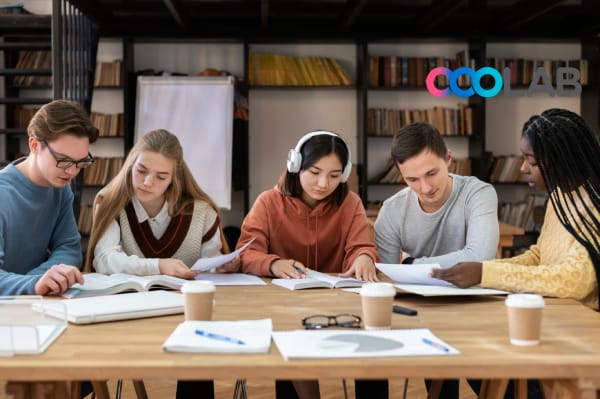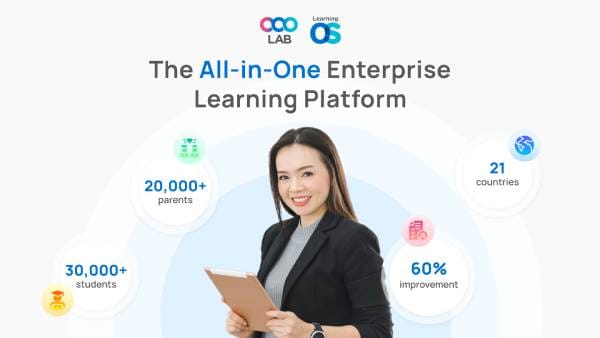Blended teaching goes beyond a mere trend; it represents a significant method that can greatly improve both teaching and learning. Wondering how to introduce it effectively into your classroom? This article aims to offer educators a practical roadmap for embracing blended teaching.
I. What is blended learning
Blended learning in schools combines traditional face-to-face classroom teaching with online learning activities. It integrates technology and digital media into the learning process, allowing students to have some control over time, place, path, and/or pace of their learning. This approach typically involves a mix of in-person instruction, self-paced learning modules, virtual discussions, and other digital resources to enhance the educational experience.
Blended learning integrates traditional, in-person classroom instruction with online learning components. It acknowledges the value of direct teacher interaction while leveraging digital resources to enrich learning and deepen understanding.
Imagine a situation where a teacher shares a video link for students to view at home, followed by students sharing their feedback via email, paving the way for dynamic classroom discussions. This represents merely one instance of its application.
Examples of blended learning are flipped classroom, rotation model, hybrid course, online discussion and collaboration and interactive multimedia resources,...

>>> Read more: How to implement blended training in corporate training
>>>Read more: What is blended learning
>>> Read more: How enrichment centers skyrocket student success with the right LMS
>>> Read more: Choose the Right Content Authoring Tools to Scale your E-Learning Business
>>> Read more: Tips and LMS Features for Delivering Effective Feedback that Scales Learning
II. Benefits of blended learning in school
Blended learning offers several benefits in school settings:
1. **Flexibility**: Students can learn at their own pace and access materials at convenient times, accommodating different learning styles and schedules.
2. **Personalization**: Teachers can tailor learning experiences to individual student needs, providing targeted instruction and support.
3. **Increased Engagement**: Integrating digital tools and multimedia can make learning more interactive and engaging for students.
4. **Accessibility**: Blended learning can provide access to a wider range of resources and expertise beyond the physical classroom.
5. **Improved Collaboration**: Online platforms can facilitate collaboration among students and between students and teachers, fostering communication and teamwork skills.
6. **Data-Driven Instruction**: Digital tools often provide data on student progress and performance, enabling teachers to make informed decisions about instructional strategies.
7. **Preparation for the Future**: Using technology in learning prepares students for digital literacy and skills required in higher education and the workforce.
8. **Cost Efficiency**: Blended learning can potentially reduce costs associated with traditional classroom materials and resources.

III. Implementing blended learning in school
Step 1: Evaluate Your Resources
Technology
Ensure you have the essential technology, such as computers, tablets, or smartboards, needed to support online learning.
Internet Connectivity
Verify that both you and your students have reliable internet access, which is vital for the online aspect of blended teaching.
Step 2: Select the Appropriate Model
Rotation Model
Students switch between online and face-to-face instruction at scheduled intervals.
Flex Model
Online learning serves as the primary mode of instruction, supplemented by face-to-face sessions as required.
Flipped Classroom
Students review online materials ahead of class, allowing for interactive activities during face-to-face sessions.
Step 3: Curate Educational Materials
Digital Resources
Choose or create online content like videos, quizzes, and readings that align with your curriculum.
Classroom Activities
Plan interactive activities, group discussions, or projects that complement the online resources.
Step 4: Develop a Timetable
Create a weekly or monthly schedule detailing when online and in-person activities will take place. Allocate time for assessments and feedback.
Step 5: Prepare and Train
Teacher Preparation
Become proficient with the technology and online platforms you'll use for teaching.
Student Orientation
Conduct a session to help students navigate and engage with the online components.
Step 6: Execute and Monitor
Pilot Launch
Begin with a small group of students to gauge the effectiveness of your blended teaching strategy.
Monitor Progress
Use analytics and assessments to track student advancement and make necessary adjustments.
Step 7: Seek Feedback and Refine
Collect input from students and colleagues to pinpoint areas for enhancement. Implement changes as needed to improve your approach over time.
Implement your LMS for your learning TODAY

IV. Conclusion
Introducing blended teaching into your classroom might appear challenging, but with thoughtful preparation and implementation, it can enhance your students' learning experiences significantly. By using this practical guide, you'll be on the path to establishing a more interactive, tailored, and efficient educational setting.
About us
At OOOLAB (pronounced 'uːlæb'), our mission is to make complex learning operations simple. We aim to positively impact the lives of over 1,000,000 learners and educators by the end of 2026.
OOOLAB's LearningOS provides educational institutions and corporate enterprises with an all-in-one solution to create and deliver engaging learning experiences.
Reach out to us at: Linkedin, FaceBook


